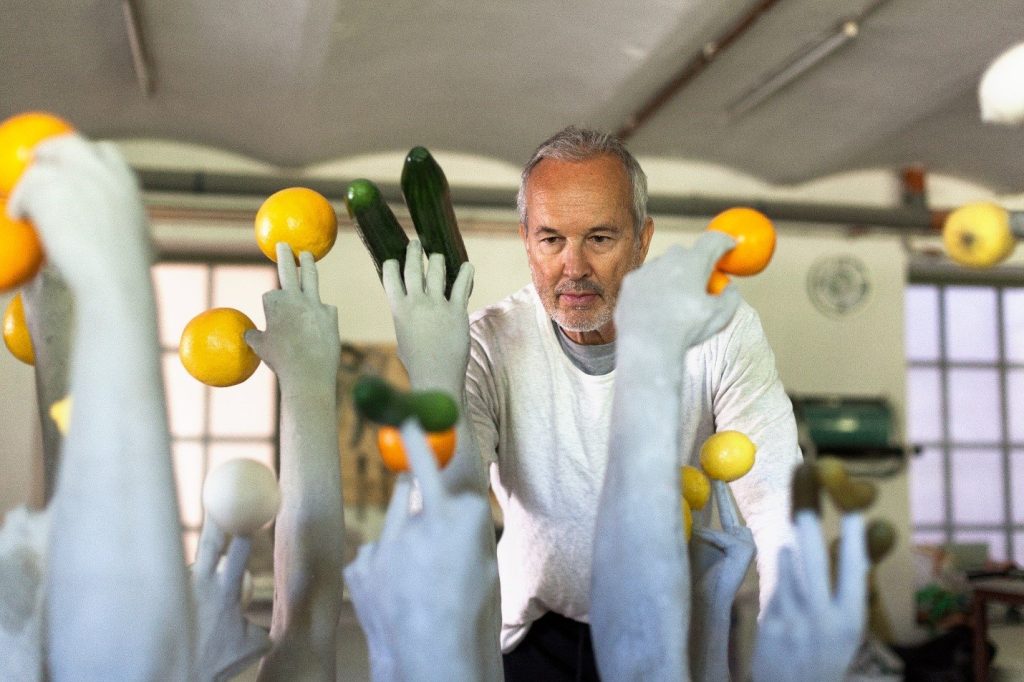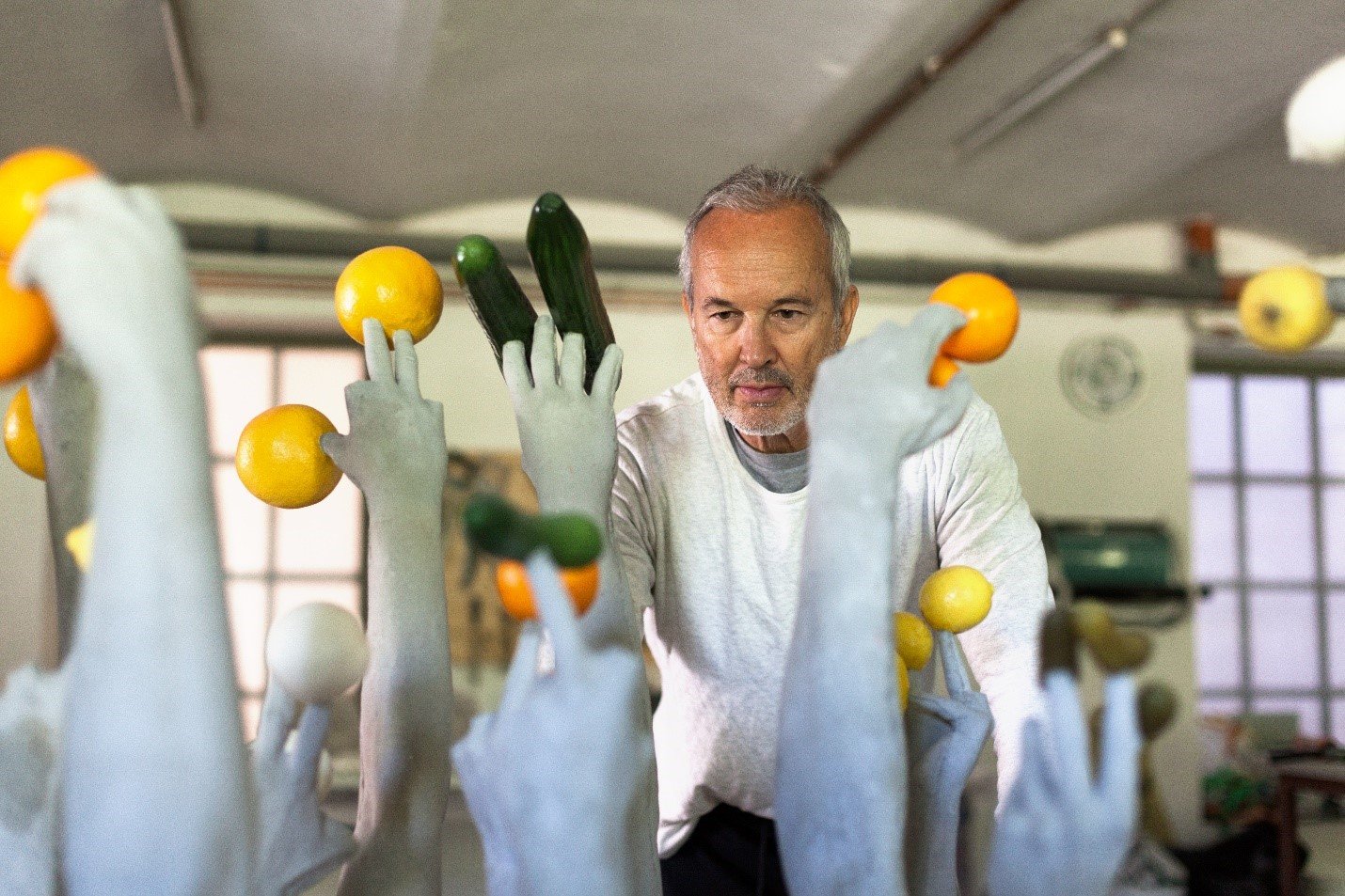
“Erwin Wurm’s Humorous Commentary on Society through Art”

**Erwin Wurm: Pushing the Boundaries of Sculpture and Social Critique**
Erwin Wurm, the Austrian artist known for his quirky yet deeply introspective works, is a master at blending humor with biting social commentary. With a career spanning decades, Wurm’s artistic practice challenges viewers to redefine conventional perceptions of sculpture while questioning contemporary societal norms. His current retrospective at Albertina Modern in Vienna showcases Wurm’s extensive body of work, which includes performance, large-scale sculptures, architecture, and conceptual art — all embodying his unique fusion of slapstick absurdity and socio-political critique.
### Sculpture, But Not as You Know It
One of the most striking aspects of Erwin Wurm’s oeuvre is his *One Minute Sculptures*, a series that invites audience participation while dismantling the traditional concept of sculpture as a permanent, immovable object. These participatory works, dating back to the late 1990s, encourage viewers to engage with everyday objects such as plungers, plastic bottles, or chairs, often producing awkward or uncomfortable poses. These actions culminate in ephemeral sculptures that last as long as the participant holds the pose according to the artist’s instructions.
While humorous on the surface — a woman holding a bucket over her head or a person stuffing random household items into their nostrils — Wurm’s sculptures are not purely comedic. They subtly dissect the absurdities and contradictions of modern life. The humor masks an underlying cultural pessimism, where these bizarre contortions evoke the mental gymnastics that modern societies perform to maintain appearances and conform to social norms. Most striking is the power reversal: the participants, who usually begin in jest, are suddenly made acutely aware of the gaze upon them, becoming not just viewers of the art but the art itself.
In the same series, Wurm ingeniously inverts the dynamic between seeing and being seen, addressing questions of accountability and visibility in the social space. What begins as a light-hearted moment becomes a commentary on personal responsibility, haunting the participant long after the momentary sculpture has dissolved.
### Architecture, Scale, and the Compression of Norms
Wurm’s artistry extends beyond performance and body-based work. His large-scale architectural pieces delve deeply into physical space and confront cultural expectations head-on. One such work, *Narrow House* (2010), is a shrunken replica of the artist’s childhood home, with its width drastically reduced, but its height and depth remaining proportional. The building’s tight, uncomfortable quarters suggest the oppressive smallness of societal confines, specifically the constricting norms of family, political thought, class, gender, and religion.
*Narrow House* is not merely a glimpse into Wurm’s personal history, but a reflection of the larger constraints that people face universally. Visitors often report feeling claustrophobic as they navigate the house, forced to stoop and squeeze, metaphorically reflecting the pressure society exerts on individuals to conform.
### Fat Cars and Melting Icons
Erwin Wurm also addresses larger societal structures in works such as *Fat Convertible* (2005), which critiques the decadence and materialism of modern consumerist culture. By inflating cars and other luxury items to grotesque proportions, Wurm transforms symbols of affluence into bloated, almost absurd versions of themselves. These works confront viewers with the political apathy and compulsive consumption that distort societal values today.
Another notable series, *Melting Houses*, imagines a world where even the most sturdy, revered icons are not above collapse. In doing so, Wurm touches upon the fragility of our socio-political and economic systems. Some of his melting structures depict icons of modernist architecture including Mies van der Rohe’s Seagram Building and Frank Lloyd Wright’s Guggenheim, iconic totems of modern capitalism and cultural achievement. Rendered as formless masses of collapsing, melting architecture, these works provocatively question whether the bedrock structures of society — capitalism, the art world, political institutions — are as “indestructible” as we may think.
### Clothing as a Socio-political Veneer
Clothing has served as a recurring motif in Wurm’s work, often symbolizing identity, protection, and the vulnerability of the human body. In large-scale installations, such as the knitted wool wall presented at Kunsthaus Graz, Wurm uses the familiar texture of clothing to convey the fragility of our existence. The oversized sweater that engulfs the space addresses a need for warmth and comfort in an increasingly “cold” world, but also touches on the superficiality and transience of this comfort.
Wurm’s use of clothing invites reflection on excess and waste — particularly the staggering 92 million tons of clothing discarded each year due to fast fashion. Moreover, the discarded garments left behind by refugees at various borders become an emblem of the privileged world’s fears, anxieties, and avoidance, casting our societies’ preoccupations in sharp relief against the